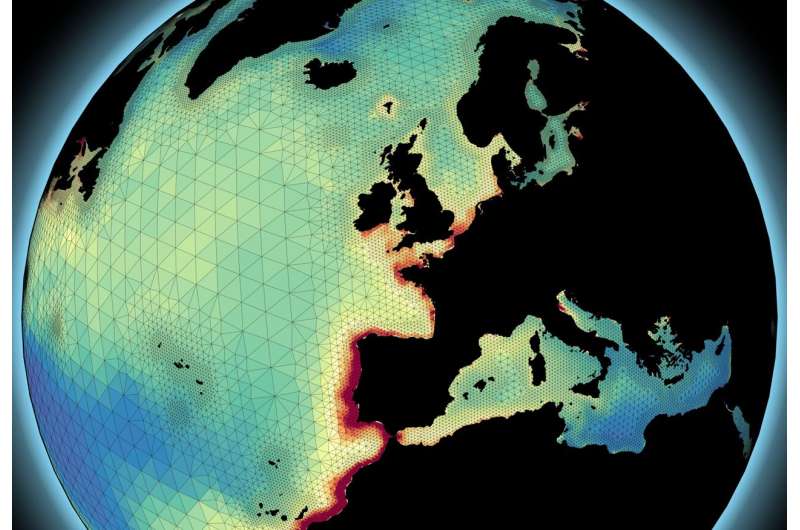This article has been reviewed according to Science X's editorial process and policies. Editors have highlighted the following attributes while ensuring the content's credibility:
fact-checked
peer-reviewed publication
trusted source
proofread
New modeling shows the intensity of CO₂ uptake is higher in coastal seas than in the open ocean

Coastal seas form a complex transition zone between the two largest CO2 sinks in the global carbon cycle: land and ocean. Ocean researchers have now succeeded for the first time in investigating the role of the coastal ocean in a seamless model representation.
The team led by Dr. Moritz Mathis from the Cluster of Excellence for Climate Research CLICCS at Universität Hamburg and the Helmholtz-Zentrum Hereon was able to show that the intensity of CO2 uptake is higher in coastal seas than in the open ocean. This is evidenced by a study published in the journal Nature Climate Change.
To counteract ongoing climate change, it is important to understand how CO2 emissions are distributed. And which exchange processes between the atmosphere, ocean and land regulate the distribution. Methodological developments in recent years have allowed for a more flexible inclusion of physical and biogeochemical processes in climate models and for capturing individual regions with higher resolution.
Researchers from the Cluster of Excellence "Climate, Climatic Change, and Society" (CLICCS) have taken advantage of this. In collaboration between Helmholtz-Zentrum Hereon, Universität Hamburg, Max Planck Institute for Meteorology and University of Bern, they have developed a new type of ocean model that can efficiently simulate the transport, storage and turnover of carbon in the global coastal ocean for the first time: ICON-Coast.
More realistic representation
In computational climate science, land and ocean, the Earth's two major carbon reservoirs, have so far been considered separately. The transport of carbon into the coastal seas, for example via river inputs, coastal erosion and tidal flats, has been ignored. Coast-specific processes could only be considered in a limited and spatially coarse manner because climate models were developed for global scales.
Due to the more realistic representation and higher resolution in the transition zone between land and ocean used in ICON-Coast, the model offers new possibilities to explore the effects of climate change on coastal areas and marine ecosystems, such as risks from heat waves, storms, or global sea level rise.
The coastal ocean is small but significant
It is known from observations that the increase in atmospheric CO2 concentration enhances the uptake of CO2 into the ocean, thereby significantly mitigating climate change. Simulations with ICON-Coast now shed light on the causes and enable understanding of the function of coastal and marginal seas in the Earth's climate dynamics.
"Our analyses show that intense plankton growth is the key to enhanced CO2 uptake in the coastal ocean and that this uptake is higher than in the open ocean. This is due to climate-induced changes in the circulation and increasing nutrient inputs from rivers," says Mathis, who led the study. The researchers also expect that the intensity difference between coastal seas and the open ocean will continue to strengthen further with ongoing CO2 emissions.
"Coastal management strategies that disturb biological production could weaken the ocean's CO2 uptake and make climate protection more difficult," emphasizes Mathis. "With the new model, we can also test approaches to CO2 avoidance such as offshore wind energy for their effectiveness and undesirable side effects."
More information: Moritz Mathis et al, Enhanced CO2 uptake of the coastal ocean is dominated by biological carbon fixation, Nature Climate Change (2024). DOI: 10.1038/s41558-024-01956-w
Journal information: Nature Climate Change
Provided by Helmholtz Association of German Research Centres




















